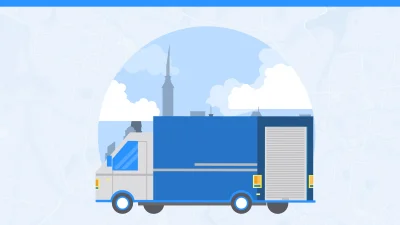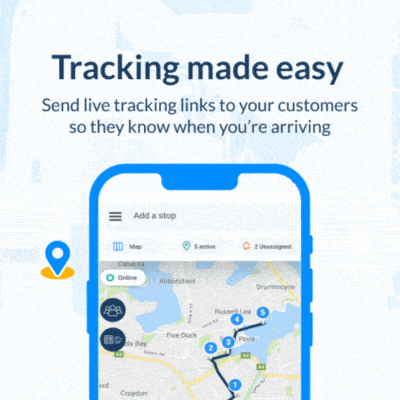This article will act as the ultimate guide to choosing the right delivery management software for your delivery business.
Having a trustworthy and effective delivery management system is essential in the fast-paced corporate climate of today. Businesses use delivery management software to track and manage their deliveries in real time while automating dispatch and scheduling, optimizing routes.
For organizations of all sizes, from smaller e-commerce shops to huge logistical businesses, it is a crucial tool. You can learn from this article what to look for in delivery management software, the various kinds that are offered, and how to choose and execute the best option for your company.

Types of delivery management software
Independent software
This is a standalone program used only for delivery management. It is a standalone piece of software that is not connected to any other applications.
Integrated software
Software that is incorporated into other business systems, such as a system for managing warehouses or an accounting system By combining the management of delivery with other elements of their organization, it enables businesses to streamline their operations.
Cloud-based software
Software that is accessed online and is hosted on distant servers is referred to as cloud-based software. Businesses no longer need to maintain and update the software on their own servers because they can now access their delivery from anywhere.
Pros and cons
Standalone software
Pros
- This type of software is designed specifically for delivery management, which means that it is highly specialized and can cater to the specific needs of the business.
- This software is not dependent on any other systems, which means that it can be used independently, and does not require any integration.
Cons
- Standalone software is a separate system and is not integrated with other business systems, which can lead to inefficiencies and a lack of visibility in other areas of the business.
- It may not be cost-effective and might require additional investment in other systems to support it.
Integrated software
Pros
- By combining the administration of delivery with other elements of their organization, such as warehouse management and accounting, integrated software enables businesses to streamline their operations.
- This improves overall business operations visibility and control.
Cons
- Because it needs to be integrated with other systems, integrated software may be more difficult to install and operate than standalone software, and it might cost more to integrate other systems.
Cloud-based software
Pros
- Cloud-based software is accessible from anywhere and does not require the installation of any additional hardware or software on the company’s servers.
- It is affordable and doesn’t require any additional hardware or software investments.
- It can also adapt to the shifting needs of the business and is extremely scalable.
Cons
- Due to the company’s reliance on the internet connection and service provider dependability, downtime and inconvenience may occur.
- The fact that the data is stored on the provider’s servers raises questions about data security and privacy, which can be problematic for companies that handle sensitive data.
- Before making a choice, it is crucial to weigh the benefits and drawbacks of each form of delivery management software, taking into account the particular requirements of the company and the potential impact on all aspects of operations. Why is delivery management software important?
Delivery management software features
Delivery software plays a crucial role in the efficient functioning of businesses that rely on timely and accurate deliveries. To fully optimize their delivery operations, businesses may require a range of essential capabilities in their delivery management software, including:
@steve_orenstein Why is route optimisation important? – CEO Steve Orenstein #ceo #steveorenstein #routeoptimisation #routeplanning #route #startup #business
♬ original sound – Steve Orenstein – Steve Orenstein | Business
Route optimization
This feature allows for the rapid and precise determination of the most efficient and cost-effective routes for deliveries, taking into account variables such as traffic, distance, and delivery windows.
Real-time tracking
This capability enables businesses to track deliveries in real-time, ensuring they are on schedule and arrive on time.
Scheduling and dispatching
This feature is responsible for planning and coordinating deliveries, including the selection of drivers or vehicles for specific deliveries.
Proof of delivery
This feature allows businesses to record and save digital evidence of delivery, such as digital signatures or images, to confirm successful delivery.
Reporting and analytics
This feature generates reports and analyses on the performance of deliveries, providing data on parameters such as on-time delivery rate, delivery costs, and customer satisfaction.
Integration with other systems
This capability allows for seamless integration with other systems such as inventory control, accounting, and CRM software, to streamline the delivery process.
Mobile App
This feature provides access to the software through a mobile application, allowing customers and drivers to track the delivery process, and businesses to keep tabs on the driver’s location, delivery progress, and other key data.
It’s important to keep in mind that different delivery management software may have varying features, so researching and comparing multiple options is crucial in finding the one that best suits the specific needs of your business.

Why is delivery management software important?
Delivery management is crucial because it ensures the timely and efficient delivery of goods and products to customers. This is essential for sustaining customer happiness and fostering a sense of confidence in a company.
In addition to lowering logistics and transportation costs, effective delivery management also enhances forecasting and inventory control. Delivery management can also aid in enhancing coordination and communication both within a firm and between a company and its partners or suppliers.
Who uses delivery management software?
Many companies, including the following, use delivery management software:
E-commerce
These organizations track and manage their online orders using delivery management software to make sure that customers receive their products on time and accurately.
Logistics and transportation
These companies utilize delivery management solutions to plan deliveries, track the flow of goods, and optimize routes.
Retail businesses
To control product deliveries to their stores and clients, many enterprises utilize delivery management software.
Wholesale and distribution companies
These companies utilize delivery management software to coordinate the flow of products between their warehouses, distribution hubs, and clients.
Food and beverage
These companies use delivery management software to organize the distribution of their products to customers.
Pharmaceutical and healthcare
These businesses utilize delivery management software to coordinate the transportation of medical equipment and supplies to hospitals and clinics.
Home Services
These companies schedule and provide services including house cleaning, appliance repair, and home maintenance using delivery management software.
Rental firms for events and parties
These companies employ a delivery management solution to coordinate the setup, delivery, and pickup of party supplies and equipment.
Construction and manufacturing firms: These industries utilize delivery management software to coordinate the supply of equipment, finished goods, and raw materials.
Delivery and courier services
These companies manage the scheduling and delivery of shipments, documents, and other objects using delivery management software.

The ultimate guide to choosing the right delivery management software
Businesses should first identify their unique goals and requirements before evaluating and selecting the best delivery management software. The size and scope of their distribution activities, as well as the exact features and functionalities that are necessary, must all be determined.
Businesses should investigate and contrast several possibilities after identifying their specific demands in order to choose software that satisfies those needs. Requesting demonstrations and free trials is another excellent technique to assess the program because it enables firms to use it prior to purchasing.
Businesses should take into account customer support and training resources when choosing delivery management software, as these are crucial for successful adoption.
It is essential to correctly integrate your delivery management software after making the right decision in order to guarantee its success. One of the best implementation strategies is to train staff employees on the program so they are fully conversant in its use. In order to assist businesses optimize their operations, it is also crucial that the software be coupled with pre-existing systems like accounting or warehouse management systems.
It is essential to set clear rules and procedures in order to guarantee that the software is used correctly and consistently. In order to ensure that the software is running as intended for the needs of the business, it must also be regularly optimized and monitored.

Locate2u: the delivery management software you need
Choosing the right delivery management software (DMS) for your delivery business can be a daunting task, but it’s important to consider the specific needs of your organization.
Locate2u is a DMS that can help streamline your entire delivery process by providing essential features such as route optimization, proof of delivery, real-time tracking, and more. These capabilities can help you meet customer expectations and keep up with the ever-changing challenges of delivery.
Say goodbye to manual route planning and pen and paper and start optimizing your delivery operations with Locate2u today. We hope our article on the ultimate guide to choosing the right delivery management software was helpful! Get in touch with our team today.
Share this article
About the author
Marketing Coordinator at Locate2u having completed a Bachelor of Creative Arts, majoring in English Literature and Creative Writing. I have extensive experience in editing and proofreading, as well as creating content for a range of audiences.














